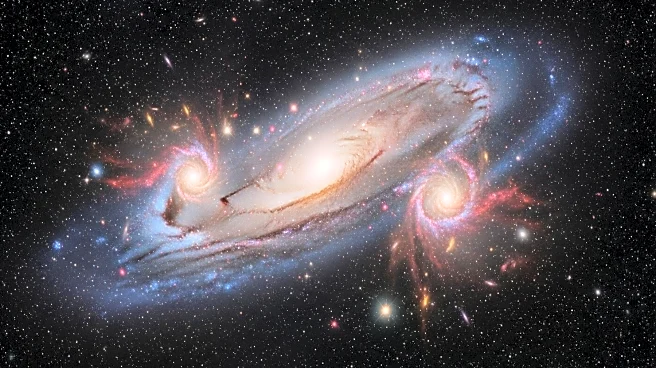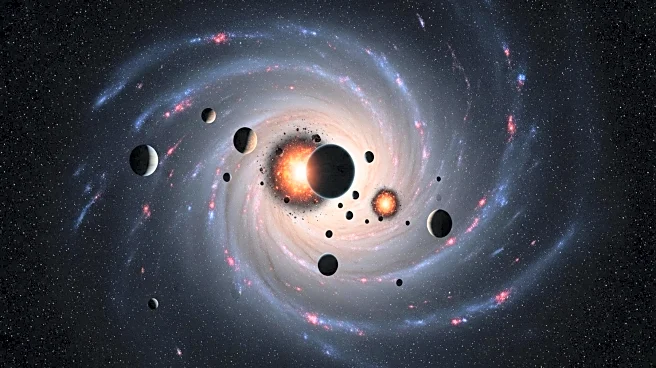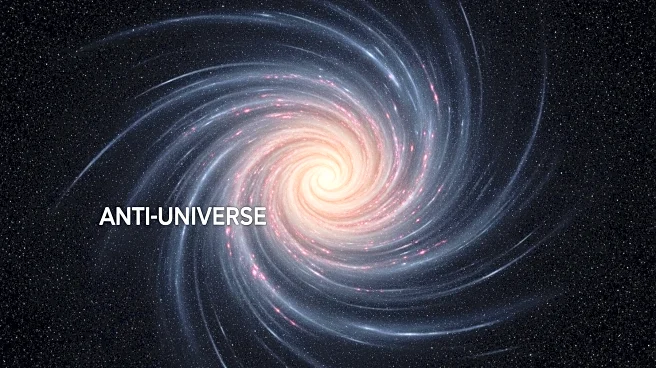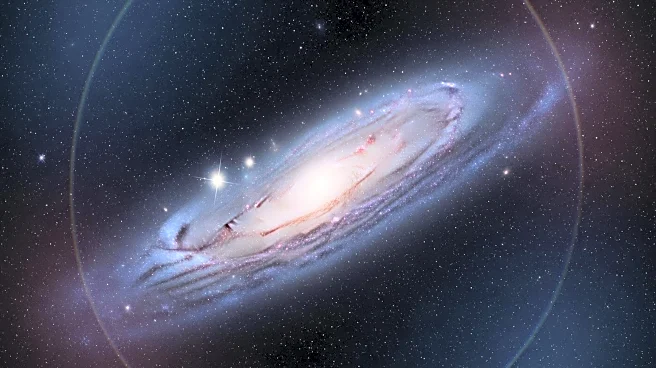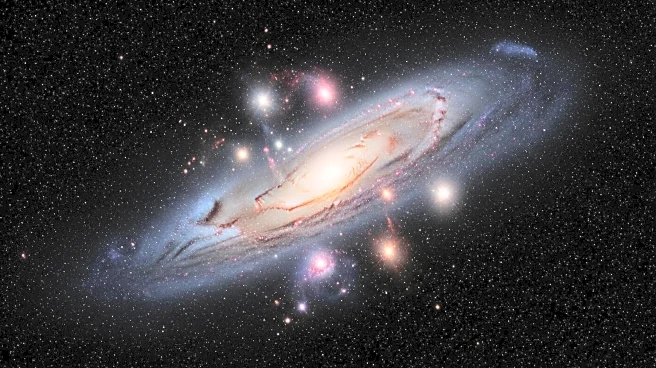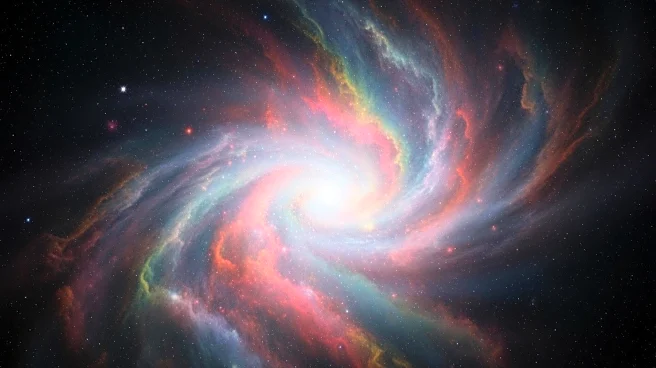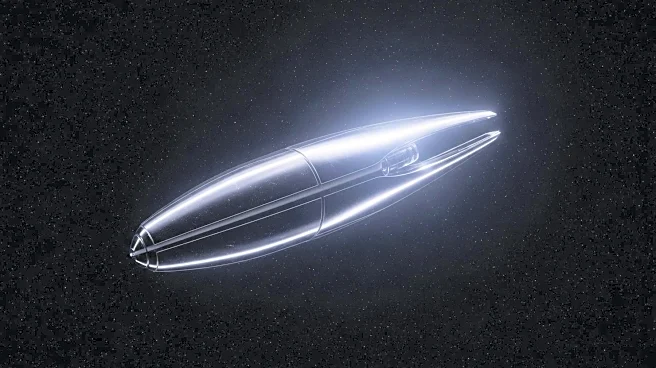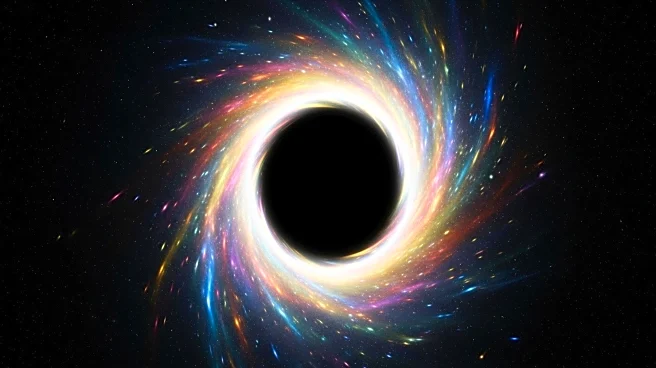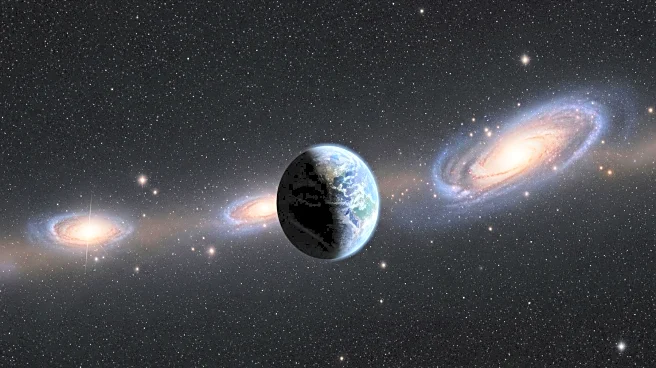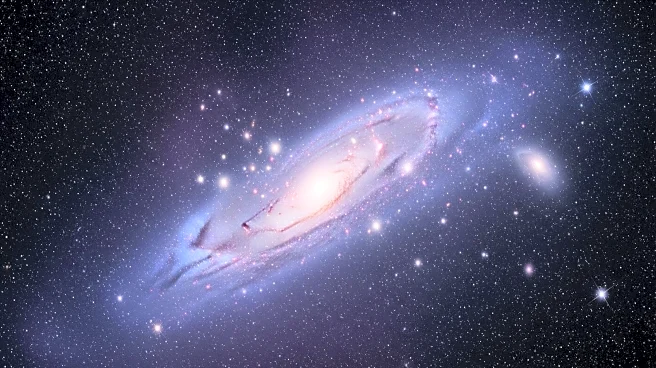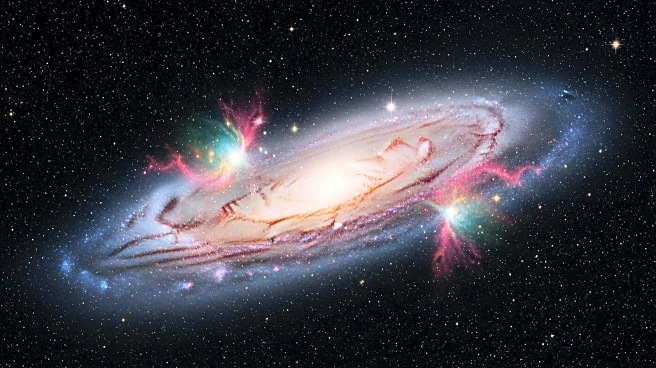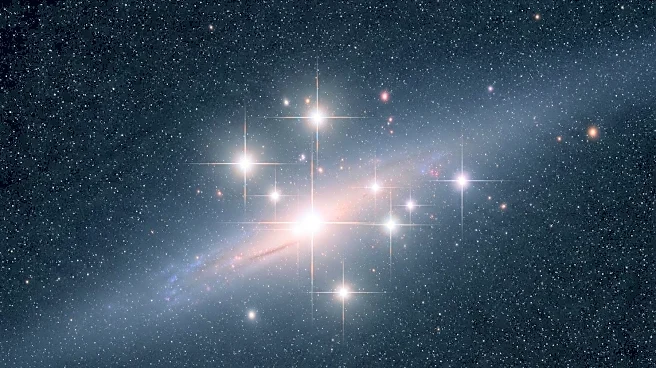What is the story about?
What's Happening?
Astronomers have identified a massive structure in the universe, termed the 'Big Ring,' which challenges existing cosmological models. Led by Alexia Lopez at the University of Central Lancashire, the study analyzed quasar absorption data to reveal a nearly circular assemblage of galaxies. This structure spans approximately 1.3 billion light-years in diameter and 4.1 billion light-years in circumference, located about 9.2 billion light-years away. The discovery raises questions about the cosmological principle, which posits that matter is evenly distributed at large scales. The Big Ring's size exceeds the expected limit for coherent structures, suggesting that the universe may be more organized than previously thought. The study, published in the Journal of Cosmology and Astroparticle Physics, calls for further investigation to confirm these findings and explore their implications.
Why It's Important?
The discovery of the Big Ring has significant implications for cosmology, potentially altering our understanding of the universe's structure. If confirmed, this finding could challenge the cosmological principle, which underpins many current models. The existence of such large-scale structures suggests that the universe may be more complex and organized than previously believed. This could lead to refinements in cosmological models and assumptions, impacting theories about the universe's formation and evolution. The discovery also highlights the need for more comprehensive surveys to understand the prevalence and nature of these structures, which could reshape our understanding of the cosmic web.
What's Next?
Further research is needed to confirm the existence of the Big Ring and understand its implications. Astronomers will seek additional data from other surveys to verify the structure's presence and explore similar features in different regions of the sky. This will help determine whether such structures are rare anomalies or common components of the cosmic web. The findings may prompt cosmologists to refine existing models and test new hypotheses about the universe's large-scale organization. Continued exploration could lead to a deeper understanding of cosmic history and the forces shaping the universe.
Beyond the Headlines
The discovery of the Big Ring raises questions about the role of cosmic strings and other phenomena in shaping the universe. These threadlike defects, formed in the early universe, could have left imprints in matter, influencing the formation of unusual structures. The study also underscores the importance of using diverse data sources, such as quasar spectra, to uncover hidden aspects of the universe. This approach allows researchers to map faint matter and gain insights into the universe's composition and dynamics. The findings may inspire new theories and methodologies in cosmology, driving advancements in our understanding of the universe.
AI Generated Content
Do you find this article useful?
